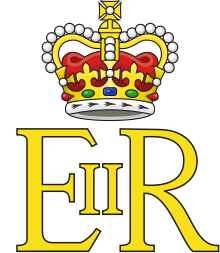
Summary
The Pillar Box War refers to a number of politically motivated acts of vandalism against post boxes in Scotland during the early 1950s in a dispute over the correct title in Scotland of the new British monarch, Elizabeth II or Elizabeth I.[1]

Background edit
Ascending to the throne in February 1952, Elizabeth adopted the royal style of Elizabeth the Second. This was reflected in her royal cypher, which took the Latin form 'EIIR'. Some objected to this usage as the new queen was the first Elizabeth to reign over the United Kingdom or indeed Great Britain, Elizabeth I having been the queen of the former kingdoms of England and Ireland but not Scotland.[2]
In 1953, John MacCormick took legal action against the Lord Advocate in the case of MacCormick v Lord Advocate, challenging the Queen's right to call herself Elizabeth the Second. The case failed on the grounds that the matter was within the royal prerogative, and thus the Queen was free to adopt any title she saw fit.[2]
Actions and legacy edit
Some occasions of vandalism and even explosions of post boxes which carried the Queen's 'EIIR' insignia were recorded.[3][4] One particular pillar box in Edinburgh's Inch district was repeatedly vandalised with tar, paint and a hammer before being blown to pieces less than three months after its unveiling.[5]
The folksongs Sky High Joe[6] and The Ballad of the Inch[7] commemorate these events.[8]
After 1953, new post boxes were placed in Scotland carrying only the Crown of Scotland image rather than the 'EIIR' cypher,[9][10] which continued to be used in the rest of the United Kingdom, and indeed in some of the Queen's other realms and territories. A post box with the 'EIIR' cypher was installed in Dunoon in 2018 and immediately scheduled for replacement on discovery of the error.[11]
See also edit
References edit
- ^ "National Records of Scotland; Research, Learning, Features - Queen Elizabeth II (1926-2022) and Scotland "Symbols of monarchy"". NRS. Retrieved 8 October 2022.
- ^ a b "Judge dismisses petition on Queen's title. Covenant Association to Appeal". The Glasgow Herald. 18 May 1953. p. 3. Retrieved 20 April 2017.
- ^ Scott, Andrew Murray; Macleay, Iain (18 January 1990). Britain's Secret War: Tartan Terrorism and the Anglo-American State. Mainstream Pub. ISBN 9781851583065 – via Google Books.
- ^ "The return of our fiends in the north". The Independent. 6 March 2002. Archived from the original on 26 May 2022.
- ^ The Scots Independent, March 1953, Page 2
- ^ Spiegel, Max. "SKY-HIGH JOE". mudcat.org.
- ^ "Features - the Rebels Ceilidh Song Book - the Ballad of the Inch". Archived from the original on 23 February 2008. Retrieved 2 May 2008.
- ^ Neat, Timothy (25 August 2012). Hamish Henderson: The Making of the Poet. Birlinn. ISBN 9780857904867 – via Google Books.
- ^ "About Boxes – The Letter Box Study Group". lbsg.org.
Q = Queen Elizabeth. When the first of Queen Elizabeth's boxes were erected in Scotland, in 1952, some objected to the EIIR cipher, arguing that Scotland had never had an Elizabeth I. Several boxes in Scotland were vandalised. The problem went as far as the prime minister; eventually it was decided that Scottish boxes would bear a Scottish Crown in place of the EIIR cipher.
- ^ Collins, Mike (1 March 2019). "St Andrews in Focus Issue 66 Sep Oct 2014". Issuu.
- ^ National Newsdesk (17 August 2018). "New EIIR postbox sparks fury among residents of Scottish seaside town". The National.


